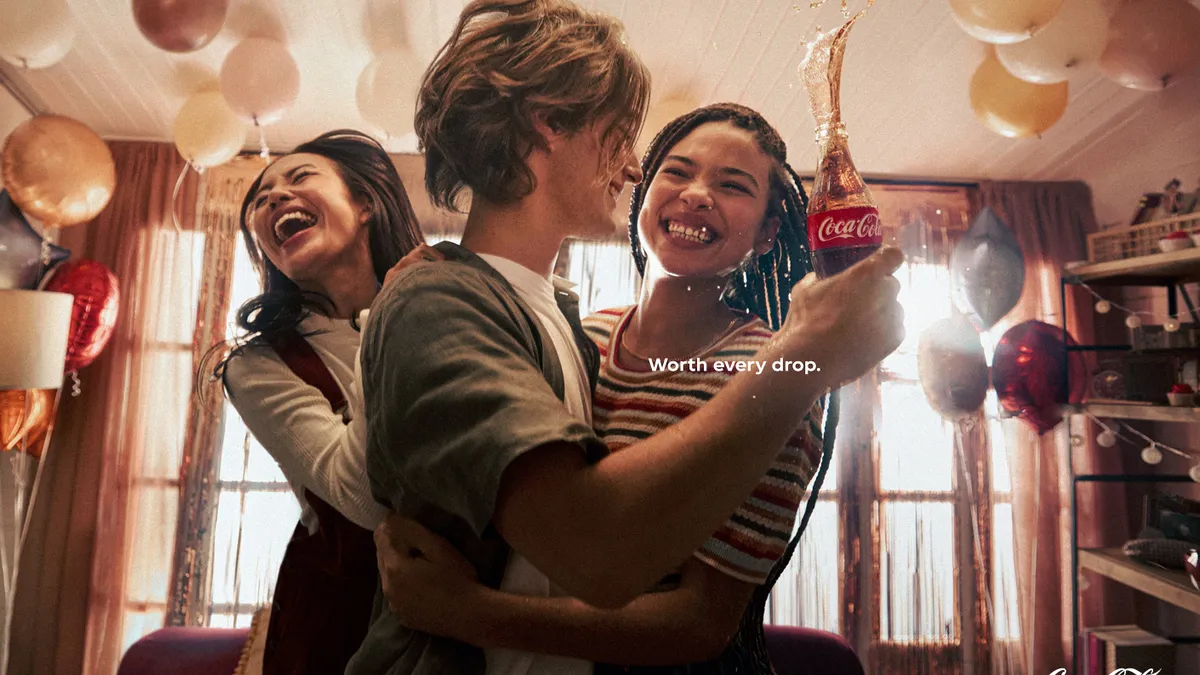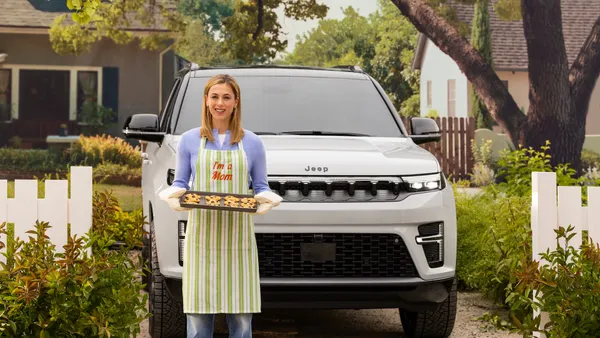Campaign Trail is our analysis of some of the best new creative efforts from the marketing world. View past columns in the archives here.
Coca-Cola has made togetherness and human connection a focus of its marketing since launching its "Real Magic" platform in 2021. While the platform has frequently dipped into art — both world-renowned and AI-generated — it has also put the brand at the center of meals and family gatherings.
For its latest "Real Magic" iteration, the brand tapped longtime agency partner David Miami for “Spills,” a campaign that switches focus from a bottle of Coke to the moment of connection that caused a spill. In a series of TV spots, the action starts with a spill before reversing in slow-motion to show the instigating moment: a reunion on the street between a man and woman, a surprise party entrance with friends or a cuddle with a dog at the door.
Along with TV ads in the U.S., the campaign includes out-of-home and digital out-of-home ads in the U.S. and Brazil. While David Miami previously relied on Coca-Cola's iconic elements when it attempted to capture sonic moments in static photos, "Spills" attempts to take the attention off the brand and give it to true-to-life human interactions.
“Let's be honest, there are more important things than the product in itself,” said Edgard Gianesi, chief creative officer at David Miami. “Everything that we normally do in advertising transforms the product into the hero of any situation. The reality is human connection … is pretty much the most important thing in life.”
That focus on key human moments comes as consumers around the world continue to adjust to post-pandemic life but still face domestic challenges at a time of global conflict and crisis. "Spills" takes a comparatively minor inconvenience — a spilled soda — and encourages consumers to pay attention to what matters most.
“We took something simple and it caught people's attention because they can relate to it, instead of going all AI,” said Joana Plautz, creative director at David Miami. “Sometimes when you touch people in something that's so true to them, they stop and think, and you don't need to go overboard.”
Capturing the moment
As with many modern campaigns, Coca-Cola and David sought authenticity when producing and filming "Spills." The agency wanted the spots to look spontaneous but also well-crafted; a lot of work was put into color coordination to make sure that the viewer's eye went to the right place.
Planning and rehearsal keyed in on finding the right situations for a spill, a woman jumping into a man's arms, or a group of young friends hugging and jumping at each other. The production shot film and photos at the same time, using a camera with a robotic arm so that characters could repeat the same movement every time and photographer-director Nixon Freire and his crew could capture the same emotion — and spill — across mediums.
“We wanted the spill to look real, which is quite hard, to be honest,” Plautz said.
The mix of slow motion and reverse film required a precise production, but the crew also left room for the things that cannot be controlled on the day of the shoot, like how a dog would react to his on-screen owner.
“It was quite tricky, but the whole objective was to capture it in the most natural possible way,” Gianesi said.
In the end, Coca-Cola and David were able to capture the emotions behind human interactions with the secondary role that the beverage plays in those moments. Having an iconic brand with immediately recognizable assets — the font, the bottle, even the liquid — helps, but so does a brand team that trusts an agency to try something different.
“It's not every day that you're gonna have a group of marketeers agree with you that we are going to see their product not as a hero, but actually, Coca-Cola is spilling over the situation," Gianesi said. "It takes bravery for that decision as well as partnership.”
It is a relationship that David wants to have with all its clients, and one that applies to Coca-Cola and its global marketing team, from the U.S. to Brazil to Japan.
“We had a meeting with people from Coca-Cola from all different parts of the world,” Gianesi said. “It was the same reaction [from everyone]: 'This is the kind of message that we should deliver.'”













